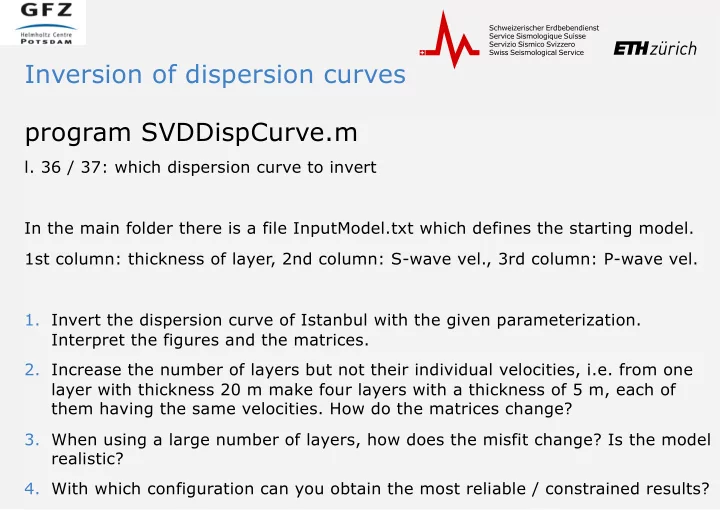

Inversion of dispersion curves program SVDDispCurve.m l. 36 / 37: which dispersion curve to invert In the main folder there is a file InputModel.txt which defines the starting model. 1st column: thickness of layer, 2nd column: S-wave vel., 3rd column: P-wave vel. 1. Invert the dispersion curve of Istanbul with the given parameterization. Interpret the figures and the matrices. 2. Increase the number of layers but not their individual velocities, i.e. from one layer with thickness 20 m make four layers with a thickness of 5 m, each of them having the same velocities. How do the matrices change? 3. When using a large number of layers, how does the misfit change? Is the model realistic? 4. With which configuration can you obtain the most reliable / constrained results?
Properties of the autocorrelation function program AutocorrFct_synth_1.m 1. Calculate the ACF of a simple sinusoid signal (f=0.16Hz). What do the various plots show? 2. Add noise to the signal (l. 10-11), first a low level of noise, then a higher level of noise. How do the plots change? What does this mean? 3. For the noisy signal, use a filter (l. 14-16). First use a wide bandwidth, then use a narrow bandwidth. What can you see? 4. Repeat all previous steps using two sinusoids with different frequencies and amplitudes (change l. 18 in the code). What do you notice? program ACF_noise.m 1. Test the influence of the filter for a real data set. Change both the filter bandwidth and the frequency range. How do you interpret the velocity changes? For your info: Figure (88) shows the ACF for various time windows and the mean ACF, relative to which the velocity changes are calculated, in red.
Recommend
More recommend